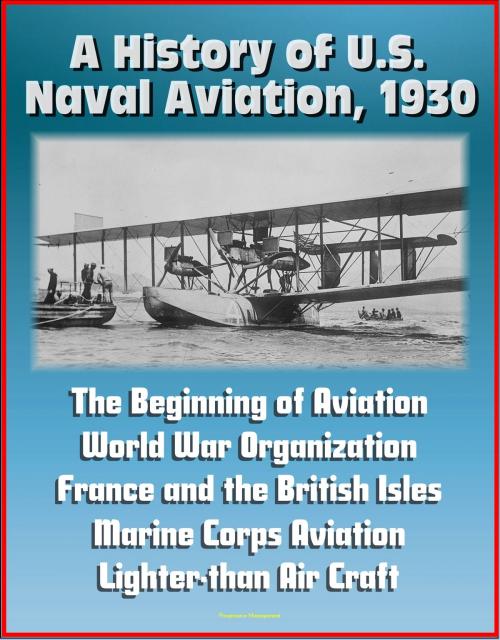A History of U.S. Naval Aviation, 1930: The Beginning of Aviation, World War Organization, France and the British Isles, Marine Corps Aviation, Lighter-than Air Craft
Nonfiction, History, Military, Aviation, Naval| Author: | Progressive Management | ISBN: | 9781301761494 |
| Publisher: | Progressive Management | Publication: | January 29, 2013 |
| Imprint: | Smashwords Edition | Language: | English |
| Author: | Progressive Management |
| ISBN: | 9781301761494 |
| Publisher: | Progressive Management |
| Publication: | January 29, 2013 |
| Imprint: | Smashwords Edition |
| Language: | English |
This informative history of early Naval aviation was prepared in 1930, when memories of the beginning of aviation were still fresh. CONTENTS * CHAPTER I * The Beginning of Aviation * CHAPTER II * History of Pre-War Naval Aviation * CHAPTER III * World War Organization and Personnel * CHAPTER IV * United States Naval Aircraft Factory * CHAPTER V * United States Naval Aviation in France * CHAPTER VI * United States Naval Aviation in the British Isles * CHAPTER VII * United States Naval Aviation in Italy * CHAPTER VIII * The Northern Bombing Group * CHAPTER IX * Marine Corps Aviation * CHAPTER X * The Trans-Atlantic Flight * CHAPTER XI * Development of Heavier-than-air Craft * CHAPTER XII * Development of Lighter-than-air Craft
Although a large number of experimenters gave their attention to the problem of mechanical flight previous to the last decade of the nineteenth century, nothing practical was achieved prior to that time. But with the perfection of the steam engine and the development of the internal combustion engine, there came inducement to sound experimentation bringing forth such well known scientists and inventors as Lilienthal, Maxim, Langley, and the Wright brothers.
Otto Lilienthal, a German, made the first successful flight in a man-carrying glider in 1891. This glider was a bird-shaped apparatus made of willow wood with waxed sheeting. It used cambered wings, weighed 40 pounds, and had a wing spread of 107 square feet. There were no control levers and his only method of steering was to shift the balance of the machine by swinging his legs one way or the other. Lilienthal continued his man-carrying experiments with gliders and soon thereafter developed tail surfaces for steering vertically and horizontally. He lacked the third rudder or aileron control, however, and was still dependent on the shift of body weight for preserving the lateral balance. Having executed nearly two thousand flights with several monoplane gliders, Lilienthal in 1895 built a biplane glider. He found this much easier to control and now thought he had sufficiently acquired the art of flying to justify his undertaking the next and more difficult art of imitating the rowing flight of birds. He therefore had constructed a 90-pound engine of 2.5 horsepower, to actuate the wings of his glider, but before this motor was ready for use he was killed while making a long glide on August 9, 1896. Lilienthal gave a powerful and permanent impulse to aviation, both by his writings and by his practical experience in the air. He first showed quantitatively the advantage of arched or cambered wings and proved the effectiveness of the vertical and horizontal rudders. He was the father of the aerial glider and he had intended to undertake the problem of a power-driven flying machine at the time of his accidental death.
This informative history of early Naval aviation was prepared in 1930, when memories of the beginning of aviation were still fresh. CONTENTS * CHAPTER I * The Beginning of Aviation * CHAPTER II * History of Pre-War Naval Aviation * CHAPTER III * World War Organization and Personnel * CHAPTER IV * United States Naval Aircraft Factory * CHAPTER V * United States Naval Aviation in France * CHAPTER VI * United States Naval Aviation in the British Isles * CHAPTER VII * United States Naval Aviation in Italy * CHAPTER VIII * The Northern Bombing Group * CHAPTER IX * Marine Corps Aviation * CHAPTER X * The Trans-Atlantic Flight * CHAPTER XI * Development of Heavier-than-air Craft * CHAPTER XII * Development of Lighter-than-air Craft
Although a large number of experimenters gave their attention to the problem of mechanical flight previous to the last decade of the nineteenth century, nothing practical was achieved prior to that time. But with the perfection of the steam engine and the development of the internal combustion engine, there came inducement to sound experimentation bringing forth such well known scientists and inventors as Lilienthal, Maxim, Langley, and the Wright brothers.
Otto Lilienthal, a German, made the first successful flight in a man-carrying glider in 1891. This glider was a bird-shaped apparatus made of willow wood with waxed sheeting. It used cambered wings, weighed 40 pounds, and had a wing spread of 107 square feet. There were no control levers and his only method of steering was to shift the balance of the machine by swinging his legs one way or the other. Lilienthal continued his man-carrying experiments with gliders and soon thereafter developed tail surfaces for steering vertically and horizontally. He lacked the third rudder or aileron control, however, and was still dependent on the shift of body weight for preserving the lateral balance. Having executed nearly two thousand flights with several monoplane gliders, Lilienthal in 1895 built a biplane glider. He found this much easier to control and now thought he had sufficiently acquired the art of flying to justify his undertaking the next and more difficult art of imitating the rowing flight of birds. He therefore had constructed a 90-pound engine of 2.5 horsepower, to actuate the wings of his glider, but before this motor was ready for use he was killed while making a long glide on August 9, 1896. Lilienthal gave a powerful and permanent impulse to aviation, both by his writings and by his practical experience in the air. He first showed quantitatively the advantage of arched or cambered wings and proved the effectiveness of the vertical and horizontal rudders. He was the father of the aerial glider and he had intended to undertake the problem of a power-driven flying machine at the time of his accidental death.















